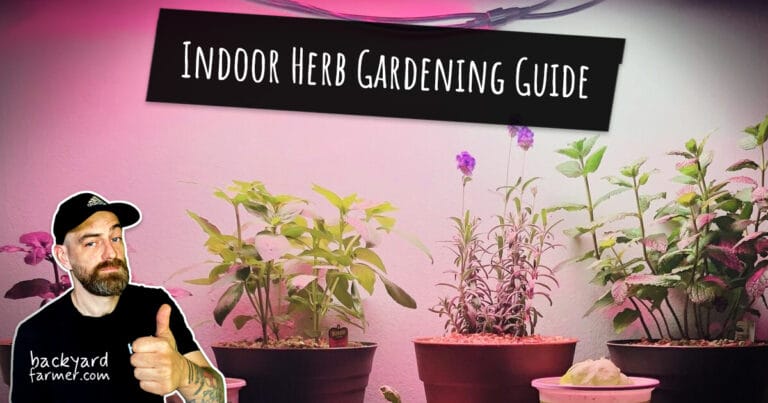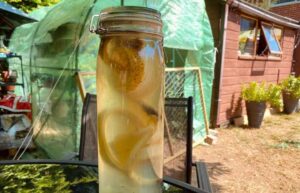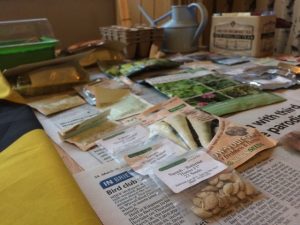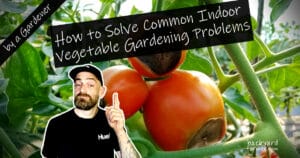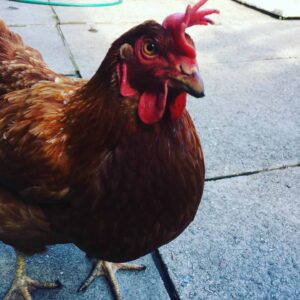Why Choose Indoor Herb Gardening?
Have you ever dreamt of plucking fresh basil straight from your kitchen windowsill, even in the dead of winter? Indoor herb gardening is your answer! It offers a unique blend of convenience, freshness, and year-round gardening opportunities that are perfect for both beginners and seasoned gardeners alike. Imagine having a constant supply of fresh herbs like rosemary, mint, or thyme at your fingertips, regardless of the season.
This form of gardening not only saves space but also adds a touch of greenery to your indoor environment, which can enhance your overall well-being.
Moreover, growing herbs indoors provides numerous health benefits. Freshly grown herbs are packed with nutrients and antioxidants that can significantly enhance your culinary creations. Additionally, an indoor kitchen garden can be a therapeutic hobby, reducing stress and improving mental health by bringing a bit of nature into your living space.
Continue Your Indoor Herb Gardening Journey
If you’re cultivating herbs indoors, these guides will help you expand into vegetables, optimise lighting, and set up efficient systems that support healthy growth.
- Budget-Friendly LED Grow Lights for Indoor Gardening – Learn about affordable LED options that help herbs thrive without high energy costs or expensive setups.
- How to Grow Indoor Salad Greens and Herbs – A practical, step-by-step guide focused on growing both leafy salad greens and herbs together in indoor spaces.
- Growing Vegetables Under Artificial Light — The Ultimate Guide – Lighting is essential indoors — this complete guide explains how to choose and use lights effectively for herbs and veggies alike.
Benefits of Indoor Herb Gardening
- Convenience of Fresh Herbs at Home: No more last-minute trips to the shop. With an indoor herb garden, you have fresh herbs whenever you need them.
- Year-Round Growing Potential: Growing herbs indoors allows you to grow herbs throughout the year, regardless of external weather conditions.
- Improved Air Quality: Many herbs purify the air, improving the overall air quality in your home.
Essential Tools and Materials
Starting an indoor herb garden doesn’t require a lot of equipment, but having the right tools and materials is crucial for success. Here’s a quick breakdown:
Choosing the Right Containers and Pots
- Size and Material Considerations: Select pots that are at least 15-30 cm in diameter for optimal growth, and consider the material for moisture control.
- Importance of Drainage: Ensure your pots have drainage holes to prevent waterlogging, which can lead to root rot.
Selecting the Right Soil
- Well-Draining Soil Mix: Opt for a potting mix that’s specifically designed for herbs or vegetables, which is light and rich in organic material.
- Soil Amendments: Consider adding perlite or vermiculite to improve drainage and aeration.
Lighting Requirements
- Natural Light Sources: Place your herbs near a south-facing window where they can receive 6-8 hours of sunlight daily.
- Using Grow Lights: If natural light is scarce, invest in full-spectrum grow lights to simulate the sun’s rays, which is essential for indoor herb growing.
Best Herbs for Indoor Growing
Not all herbs are suited for indoor growing, but many can thrive in the controlled environment of your home. Popular choices include basil, mint, rosemary, thyme, and parsley, each with its own unique requirements and benefits. To help you care for these herbs, here’s a detailed table providing essential care information.
For more detailed advice on selecting and caring for herbs indoors, you can explore additional tips from the Royal Horticultural Society here.
| Herb | Light Requirements | Watering Needs | Special Notes |
|---|---|---|---|
| Basil | Prefers full sunlight (6-8 hours) | Keep soil consistently moist | Ideal for a sunny windowsill |
| Mint | Tolerates partial light | Water regularly, but do not overwater | Prune regularly to control growth |
| Rosemary | Requires bright light (6+ hours) | Allow soil to dry out between waterings | Well-drained soil is essential |
| Thyme | Needs full sunlight | Drier soil, water sparingly | Very low maintenance, great for beginners |
| Parsley | Prefers partial shade to full sun | Keep soil consistently moist | Slow to germinate, be patient |
| Chives | Full sun (6+ hours) | Water when top inch of soil is dry | Can tolerate lower light, prefers cooler temperatures |
| Oregano | Full sun (6+ hours) | Let soil dry between waterings | Easy to propagate from cuttings |
| Cilantro | Partial to full sun | Keep soil moist | Harvest frequently to prevent bolting |
| Sage | Full sun (6+ hours) | Water sparingly | Thrives with less frequent watering |
| Lemon Balm | Partial sun (4-6 hours) | Keep soil slightly moist | Prune regularly to prevent legginess |
Step-by-Step Guide to Starting Your Indoor Herb Garden
Starting an indoor herb garden is simpler than you might think, but to ensure your plants thrive, it’s important to follow a structured approach. Here’s a detailed, step-by-step guide to help you get started on the right foot.
1. Selecting the Perfect Spot
Why It Matters: The location of your herb garden is crucial. Herbs need plenty of sunlight, and a well-chosen spot can mean the difference between flourishing plants and ones that struggle.
- Identify the Sunniest Spot: Herbs generally require 6-8 hours of sunlight daily. The best spot is usually a south-facing window that gets plenty of light throughout the day. If you’re unsure which window gets the most light, spend a few days observing different areas of your home at different times of the day.
- Consider Accessibility: Place your herbs where they’re easily accessible, ideally near your kitchen. This not only makes harvesting convenient but also ensures you’ll remember to care for them. A windowsill, kitchen counter, or a dedicated plant stand in a well-lit area are all excellent choices.
Pro Tip: If your space lacks natural light, consider using full-spectrum grow lights. These simulate natural sunlight and can be set up on a timer to ensure your plants get consistent light.
2. Choosing the Right Containers
Why It Matters: The right container is essential for healthy root development and overall plant health.
- Size and Depth: Choose containers that are at least 15-30 cm in diameter and have a depth of about 15-20 cm. This size provides enough room for the roots to grow without becoming cramped, which can stunt plant growth.
- Material Choices: Terracotta pots are popular because they allow for good air circulation around the roots, but they can dry out quickly. Plastic pots retain moisture better but don’t allow for as much air circulation. You might also consider ceramic pots, which strike a balance between the two.
- Drainage is Key: Ensure your containers have drainage holes at the bottom. Without proper drainage, water can accumulate in the soil, leading to root rot. If your pot doesn’t have drainage holes, drill some or use a pot liner that can be easily removed to drain excess water.
Pro Tip: Place a small layer of gravel or pebbles at the bottom of the pot before adding soil. This further enhances drainage and prevents the roots from sitting in water.
To learn more about optimising light conditions for your indoor herbs, check out these helpful tips from BBC Gardeners’ World here.
3. Selecting and Preparing the Soil
Why It Matters: Herbs thrive in well-draining soil that’s rich in nutrients. The right soil mix ensures your herbs have the foundation they need to grow strong and healthy.
- Choosing the Soil Mix: Opt for a high-quality potting mix designed for herbs or vegetables. These mixes are lighter than garden soil and are formulated to provide excellent drainage while retaining enough moisture for the plants.
- Enhancing the Soil: Consider mixing in some perlite or vermiculite to improve aeration and drainage. These additives help create air pockets in the soil, which roots need to access oxygen effectively.
- Sterilizing the Soil: If you’re reusing pots or soil, it’s a good idea to sterilize the soil by baking it in the oven at 180°F (82°C) for 30 minutes. This kills any pests or diseases that might harm your plants.
Pro Tip: Incorporate organic compost into your soil mix to boost nutrient levels. Compost adds essential nutrients like nitrogen, which is critical for leafy growth, and helps maintain healthy soil structure.
4. Planting Your Herbs
Why It Matters: Proper planting techniques can significantly impact how quickly and robustly your herbs grow.
- Starting from Seeds vs. Seedlings: Decide whether to start with seeds or seedlings. Seeds are cheaper but take longer to grow, while seedlings give you a head start. If you’re a beginner, starting with seedlings from a garden centre might be easier.
- How to Plant: Fill your pots with the prepared soil, leaving about 2-3 cm of space at the top. If you’re planting seeds, follow the depth instructions on the seed packet. For seedlings, dig a small hole in the soil, place the seedling, and gently pack the soil around it.
- Spacing Matters: Herbs like basil and parsley need room to spread out, so avoid overcrowding your pots. Plant only one type of herb per pot or ensure there’s enough space between different herbs in larger containers.
Pro Tip: Label your pots with the herb names and planting dates. This helps you track growth and know when to harvest or replant.
5. Watering and Maintenance
Why It Matters: Watering is one of the most critical aspects of herb gardening. Too much or too little water can quickly lead to problems.
- Watering Techniques: Water your herbs thoroughly until water starts to drain from the bottom of the pot. Then allow the soil to dry out slightly before watering again. This ensures the roots get the moisture they need without becoming waterlogged.
- Consistency is Key: Herbs like consistent moisture, but they don’t like to sit in water. Check the soil moisture regularly by sticking your finger into the soil up to the first knuckle. If the soil feels dry, it’s time to water.
- Fertilizing: Use a balanced, water-soluble fertilizer every four to six weeks during the growing season. Be cautious not to over-fertilize, as this can lead toContinuing from where we left off:
- Fertilizing: Use a balanced, water-soluble fertilizer every four to six weeks during the growing season. Be cautious not to over-fertilize, as this can lead to excessive leaf growth at the expense of flavor.
Pro Tip: Consider using a self-watering pot for herbs that require consistent moisture, such as basil. These pots help maintain a steady moisture level and reduce the risk of over or under-watering.
6. Harvesting Your Herbs
Why It Matters: Regular harvesting not only provides you with fresh herbs but also encourages the plants to produce more foliage.
- When to Harvest: Begin harvesting when the plant is large enough to handle it, typically when it reaches about 15 cm in height. For herbs like basil, start harvesting from the top leaves to encourage bushier growth.
- How to Harvest: Use clean, sharp scissors to cut the herbs, leaving enough foliage on the plant for it to continue growing. Avoid harvesting more than one-third of the plant at a time to prevent stress.
- Storing Your Harvest: Fresh herbs can be stored in the fridge for up to a week if placed in a damp paper towel. Alternatively, dry your herbs by hanging them upside down in a cool, dark place and store them in airtight containers.
Pro Tip: Pinch off any flowers that begin to form on herbs like basil and mint. Flowering can reduce the flavor of the leaves, so keeping the plants trimmed encourages continued leaf production.
7. Troubleshooting Common Issues
Why It Matters: Even the best-maintained gardens can encounter problems. Knowing how to identify and address these issues quickly can save your plants.
- Pest Management: Common pests like aphids and spider mites can be managed with natural solutions such as neem oil or insecticidal soap. Regularly check under the leaves and at the base of the plants for signs of pests.
- Dealing with Legginess: If your herbs start growing tall and spindly (a condition known as legginess), it’s usually due to insufficient light. Move them to a sunnier spot or increase the time they spend under grow lights.
- Addressing Root Rot: If your herbs are wilting despite regular watering, you might be dealing with root rot, often caused by poor drainage. Remove the affected plant from its pot, trim the rotting roots, and replant in fresh, well-draining soil.
Pro Tip: Keep a gardening journal to track what works and what doesn’t. Note any issues you encounter and how you resolved them, as this can be a valuable reference for future gardening.
If you want to move on to something bigger than an indoor herb garden check out our article Best LED Grow Lights for Indoor Gardens in 2024.
Common Problems and How to Solve Them
Even with the best care, indoor herb gardens can face challenges. Here’s a quick guide to common problems and their solutions:
| Problem | Signs/Symptoms | Solution |
|---|---|---|
| Overwatering | Yellowing leaves, soggy soil | Reduce watering frequency, ensure proper drainage |
| Underwatering | Wilting, dry soil | Increase watering, ensure even soil moisture |
| Pests (e.g., aphids, mites) | Discolored or distorted leaves, visible insects | Use neem oil or insecticidal soap |
| Powdery Mildew | White powdery spots on leaves | Improve air circulation, reduce humidity |
| Slow Growth | Small or stunted plants | Ensure adequate light, consider fertilising |
Practical Tips for Successful Indoor Herb Gardening
1. Transitioning Outdoor Herbs Indoors
If you plan to bring outdoor herbs indoors for the winter, start by repotting them into fresh, well-draining soil. Check for pests, trim any dead or unhealthy growth, and gradually acclimate the plants to indoor light levels by placing them in a shaded area first before moving them to a brighter spot indoors.
2. Using Grow Lights Effectively
When natural light is insufficient, especially during winter months, using grow lights can help your herbs thrive. Position the grow lights about 15-30 cm above the plants and run them for 12-14 hours per day. Full-spectrum LED grow lights are recommended for the best results.
3. Grouping Herbs with Similar Needs
To make maintenance easier, group herbs with similar light and watering needs together. For example, rosemary, thyme, and sage all prefer bright light and drier soil, making them ideal companions. Meanwhile, parsley, cilantro, and basil enjoy more moisture and can be grouped together.
4. Regular Pruning and Harvesting
Frequent pruning not only helps maintain the shape of your herbs but also encourages bushier growth. Always use clean, sharp scissors to make cuts, and avoid removing more than one-third of the plant at a time. Regular harvesting of herbs like basil and mint also prevents them from flowering, which can cause the leaves to become bitter.
FAQs About Indoor Herb Gardening
Yes, many herbs can be grown indoors year-round, especially if you provide them with adequate light, temperature, and care. Using grow lights can help extend their growing season through the winter months.
Herbs like basil, mint, and chives are great for beginners because they are relatively easy to care for and forgiving of minor mistakes.
Legginess in herbs is usually caused by insufficient light. Ensure your herbs receive at least 6-8 hours of bright light daily. If natural light is inadequate, consider using grow lights. Also, rotate your pots regularly so that all sides of the plant receive light.
The frequency of watering depends on the specific herb and the indoor environment. Generally, most herbs need to be watered when the top inch of soil feels dry. Be cautious of overwatering, which can lead to root rot. Herbs like rosemary and thyme prefer drier conditions, while basil and parsley need more consistent moisture.
It’s not recommended to use regular garden soil for indoor herbs. Garden soil can be too dense and may not provide the necessary drainage. Instead, use a well-draining potting mix specifically designed for herbs or indoor plants.
If you notice pests like aphids or spider mites on your indoor herbs, remove the affected leaves and use natural pest control methods such as neem oil or insecticidal soap. Ensure good air circulation around the plants and avoid overwatering, as excess moisture can attract pests.
Recommended Indoor Herb Kits for UK Gardeners
For those who are new to indoor herb gardening or simply want a convenient solution, indoor herb kits are an excellent option. These kits typically include everything you need to get started, from seeds to pots to soil.
Comparison Table: Best Indoor Herb Garden Kits
| Product | Plants Supported | Ease of Use | Price | Smart Features | Pros | Cons |
|---|---|---|---|---|---|---|
| LETPOT Hydro Grow System | 6 | High | £120 | App, automated lights | Easy to set up, sleek design, good for beginners | Medium plant capacity, some pods may fail to germinate |
| Sustainable Seed Company Herb Garden Kit | 5 | Moderate | £25 | None | Organic seeds, biodegradable pots, affordable | Requires daily watering, seeds can be slow to sprout |
| Yocca 12 Pod Hydro System | 3 | Very High | £85 | Automated watering, LED grow lights | Compact size, almost no maintenance required | Limited plant capacity, more expensive for fewer plants |
| Planters’ Choice Organic Herb Growing Kit | 9 | Moderate | £32 | None | Wide variety of herbs, eco-friendly, great value | Requires some experience, inconsistent seed germination |
| LETPOT 21 Pods Pro Hydro System | 9 | High | £220 | Touchscreen control, Wi-Fi, smart tech | High plant capacity, fast growth, ideal for tech-savvy users | Expensive, large footprint |
Conclusion
Indoor herb gardening is more than just a way to grow fresh herbs; it’s a fulfilling hobby that enhances your living space and culinary experience. By following the tips and advice outlined in this guide, you’ll be well on your way to creating a thriving herb garden indoors. Start today, and soon you’ll be enjoying the aroma and flavor of fresh herbs year-round, all from the comfort of your own home.

